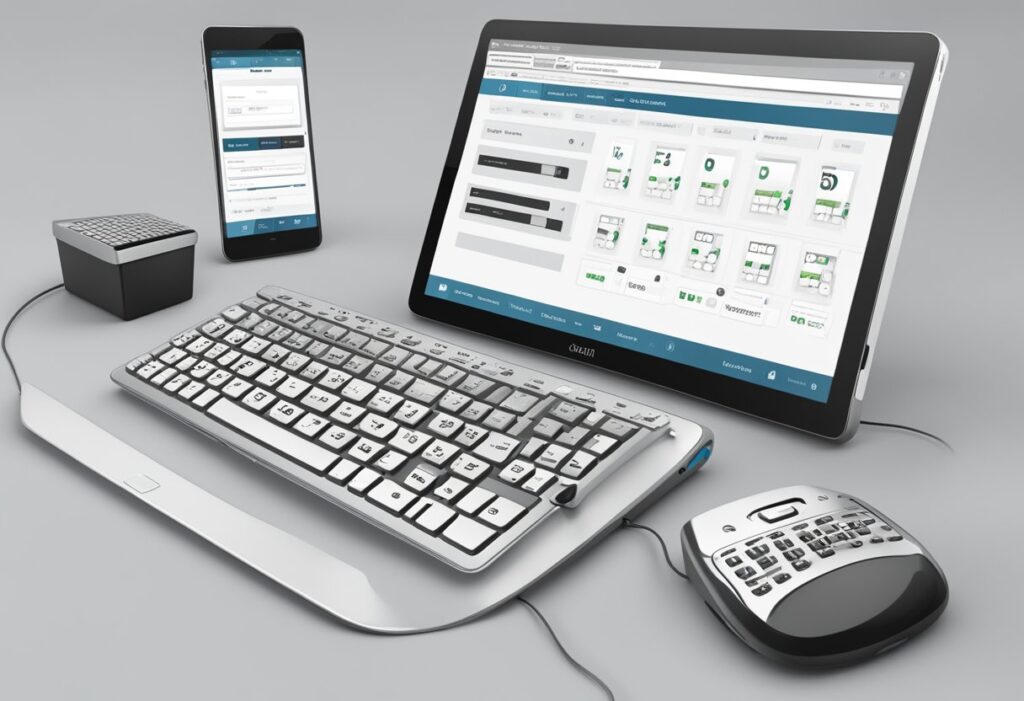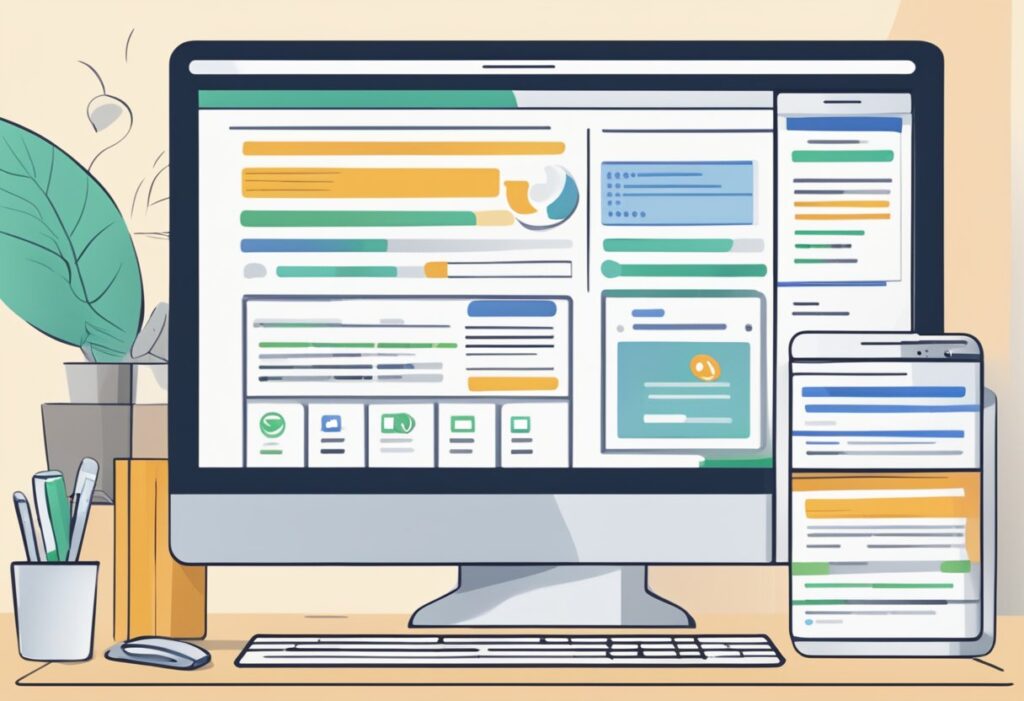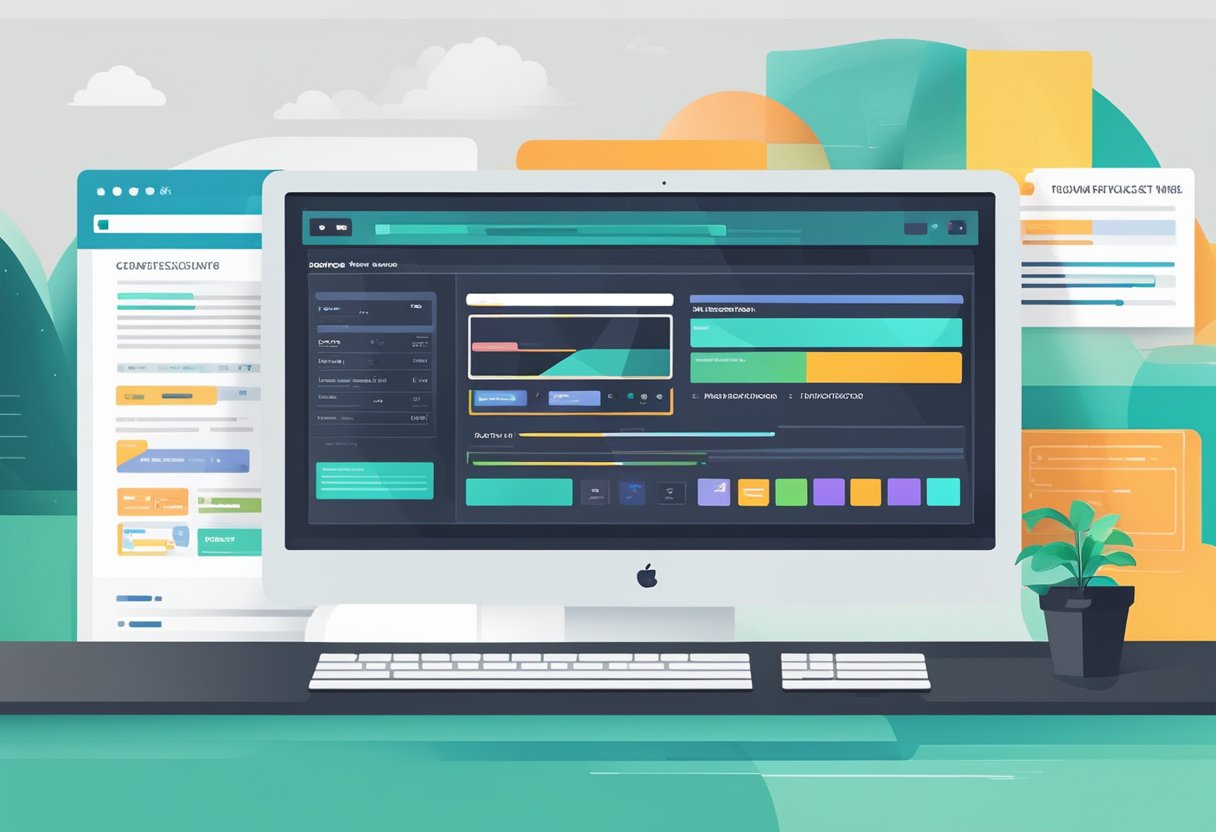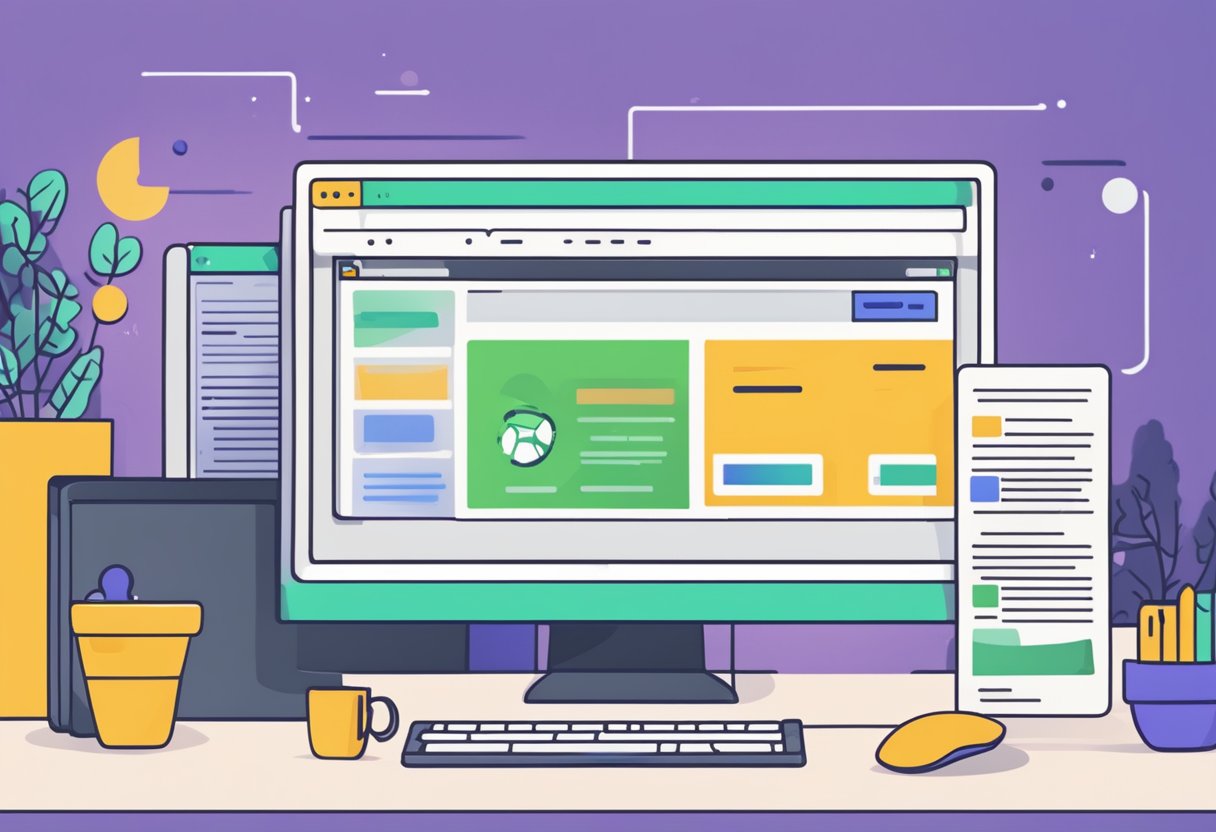Digital accessibility refers to the inclusive practice of ensuring there are no barriers that prevent interaction with or access to websites and digital tools by people with physical, cognitive, or situational disabilities. When websites, mobile applications, and other digital resources are designed and developed to be accessible, they provide equal access and opportunities to people with diverse abilities. This approach encompasses a wide range of elements, including visual, auditory, physical, speech, cognitive, language, learning, and neurological disabilities.
The importance of digital accessibility can be seen as both a social imperative and a legal requirement. By adhering to guidelines such as the Web Content Accessibility Guidelines (WCAG), creators and developers can ensure their content meets a standard that benefits those with disabilities, expanding the reach of their digital services. In turn, this inclusivity promotes equal participation in the digital age, allowing more individuals the ability to obtain information, shop, work, and interact online without facing unnecessary barriers.
Efforts toward improved digital accessibility are continuously evolving. With the advancements in technology and a growing awareness of the needs of people with disabilities, there is a greater impetus for organizations, governments, and individuals to prioritize inclusive design. By incorporating principles of usability and universal design, digital content becomes more navigable and understandable for all users, validating the principle that access to information is a fundamental human right.
Table of Contents
Understanding Digital Accessibility

In today’s digitally intensive world, ensuring that the web is inclusive for all users, regardless of their abilities, is essential.
Defining Digital Accessibility
Digital accessibility refers to the intentional design and development of digital content and technologies that are accessible to people with a broad range of disabilities. This includes websites, mobile apps, and other digital platforms being perceivable, operable, understandable, and robust enough to be used by individuals with visual, auditory, physical, speech, cognitive, and neurological impairments. The World Wide Web Consortium (W3C) defines web accessibility as enabling people with disabilities to perceive, understand, navigate, interact with, and contribute to the web.
Web Content Accessibility Guidelines (WCAG) are part of this inclusive approach, providing clear standards for web accessibility. Developed by the W3C, these guidelines are widely recognized as the benchmark for web accessibility. They set the foundation for what is considered accessible content online, with a series of guidelines that are often updated to keep pace with technological advancements.
Importance in Society
Digital accessibility is not just a technical necessity but a social imperative. When digital platforms cater to the accessibility needs of all users, it prevents the alienation of people with disabilities, ensuring they have equal access to information and functionality. This inclusive approach aligns with the principles of the Americans with Disabilities Act (ADA), which in recent years has been interpreted to extend to the digital realm.
While the WCAG is not a legal requirement in the United States, the ADA has been used as a framework for lawsuits against organizations whose digital content doesn’t meet accessibility standards. Thus, while WCAG compliance may not be a strict legal obligation, it effectively serves as a guide for what the ADA requires in digital accessibility. The importance of these guidelines in society cannot be understated, as they not only help organizations avoid legal ramifications but also foster an inclusive environment that benefits all users.
Legal Framework and Compliance

This section elaborates on the legislation, guidelines, and standards that constitute the legal backbone of digital accessibility. It navigates through the intricate lattice of laws like the ADA, and pivotal guidelines such as the WCAG, and highlights the necessity for compliance across domestic and international scopes.
Overview of Accessibility Laws
Accessibility laws provide the legal foundation to protect the rights of individuals with disabilities, ensuring equal access to information and technology. In the United States, the Americans with Disabilities Act (ADA) mandates that all electronic and information technology developed, maintained, or used by the federal government be accessible to people with disabilities. Similar laws exist globally, dictating web accessibility standards that public and private sector organizations must follow. Internationally, the European Union’s Web Accessibility Directive demands that websites and mobile apps of public sector bodies meet accessibility standards.
WCAG Guidelines
The Web Content Accessibility Guidelines (WCAG) are widely adopted international guidelines that detail how to make web content more accessible to people with disabilities. The WCAG is not a law; however, it serves as the benchmark for many web accessibility laws and policies, including those under the ADA. The guidelines are organized under four principles: that web content must be perceivable, operable, understandable, and robust. The current version, WCAG 2.1, includes additional criteria to address mobile accessibility and individuals with low vision, among other things.
ADA Compliance
While the ADA does not explicitly mention the internet, legal precedent has established the need for digital spaces to be accessible, leading to web accessibility suits against companies for non-compliance. One notable case involved the supermarket chain Winn-Dixie, where the court determined that the retailer’s website must be made accessible to people with disabilities. The ADA compliance is hinged on the notion that access should be integrated into the core experience offered by businesses rather than provided as a separate service.
International Accessibility Standards
Besides the ADA and the WCAG, there are other international standards and policies that dictate accessibility compliance. Countries have established their own laws, often reflecting or building upon the principles set out in the WCAG. For instance, Canada has the Accessible Canada Act (ACA) aimed at making the country barrier-free by 2040. The United Nations Convention on the Rights of Persons with Disabilities (UNCRPD) is another significant international treaty that impacts digital accessibility, prompting legislative changes in over 182 countries to align with its directives.
In conclusion, legal framework and compliance in digital accessibility is a critical aspect that organizations must navigate diligently to uphold the rights of individuals with disabilities and avoid potential legal repercussions.
Technical Aspects of Accessibility
The technical aspects of accessibility encompass the design and development practices that ensure digital content and technologies are usable by everyone, including those with disabilities. This requires meticulous attention to a variety of standards and techniques across different platforms and devices.
Accessible Web Design
Web accessibility hinges on adherence to standards such as WCAG 2.2, which provides comprehensive guidelines for making content accessible. Key aspects include ensuring that content is perceivable, operable, understandable, and robust (POUR principles). To resolve accessibility issues in web design, one must validate HTML code, provide text alternatives (alt text) for non-text content, and ensure that interactive elements are keyboard accessible. Properly labeled forms, consistent navigation, and the use of ARIA (Accessible Rich Internet Applications) attributes can enhance the accessibility of complex web components.
Mobile Accessibility
The ubiquity of mobile devices means that accessibility cannot be limited to desktop environments. Mobile accessibility standards dictate that applications should be usable across different screen sizes, with sufficient contrast, touch target size, and orientation support. Developers should implement screen reader support, voice control compatibility, and accessible multimedia controls. Resolving issues often includes testing with assistive technologies and considering various user interactions, such as gestures used by people with motor impairments.
Software Accessibility
Accessibility in software applications involves developing user interfaces that are navigable and readable for all users. This can be achieved by following platform-specific guidelines and using UI components that support accessibility features. Developers should also consider providing keyboard access and visual focus indicators, enabling customizable text and display settings, and ensuring that error messages are descriptive and offer clear resolutions.
Assistive Technologies
Assistive technologies, such as screen readers, magnification software, speech input software, and alternative input devices, are crucial for users with disabilities. These technologies should be compatible with digital content, allowing users to navigate, interact, and access information easily. Developers must test their content with various assistive technologies to identify and resolve compatibility issues.
By addressing the technical aspects of accessibility, developers, and designers can create inclusive digital environments that cater to the needs of all users, providing equitable access to information and functionality.
Best Practices and Strategies
Ensuring digital accessibility is a continuous process that involves a strategic approach to design, testing, maintenance, and education. Adhering to established guidelines and addressing accessibility issues promptly defines success in creating inclusive digital environments.
Building Accessible Websites
A core aspect of building accessible websites is adhering to the Web Content Accessibility Guidelines (WCAG). It starts with providing sufficient contrast between text and its background to ensure legibility for users with visual impairments. Additionally, all interactive elements should be navigable using keyboard shortcuts for those who cannot use a mouse. Text alternatives for any non-text content, like images, are essential. Alt text helps screen readers describe images to visually impaired users. To address and resolve accessibility issues, routinely assess if all elements conform to the latest WCAG standards and make the necessary enhancements.
Accessibility Testing
For accessibility testing, a combination of automated tools and manual testing is recommended. Automated tools can quickly identify some common accessibility issues, such as missing alt attributes for images or insufficient color contrast. However, manual testing by individuals who understand the nuances of accessibility is critical to uncover issues that automated tools might miss, such as logical tab order or screen reader compatibility. In resolving accessibility concerns, regular audits using a mix of these methods will ensure that web properties remain accessible to all users.
Maintaining Compliance
Maintaining compliance with accessibility standards such as the WCAG requires a proactive approach. Websites should be reviewed consistently, especially when updating content or introducing new features. Keeping a change log helps track modifications that might affect accessibility. Organizations should establish a protocol for quickly addressing any reported issues, ensuring that solutions are implemented efficiently. As digital technology evolves, so do accessibility requirements, making ongoing vigilance a key strategy.
Training and Awareness
Promoting training and awareness is vital for teams to recognize the importance of accessibility. Developers, designers, content creators, and all stakeholders should be educated on best practices, such as clearer link text and form label instructions. Training should cover how to identify and fix issues, fostering a culture of inclusion. By increasing awareness among team members, organizations can ensure that accessibility is considered at every stage of digital product creation and upkeep.
Case Studies and Real-World Examples
In understanding the significance of digital accessibility, it’s instructive to analyze case studies and real-world examples. These shed light on the ramifications of non-compliance with accessibility regulations, showcase the benefits of inclusive design, and outline the common challenges organizations face in implementing accessibility.
High-Profile Accessibility Lawsuits
In recent years, there has been a notable rise in litigation concerning digital accessibility under various laws, such as the Americans with Disabilities Act (ADA). For instance, a major lawsuit was filed against Domino’s Pizza, which highlighted the necessary continuity between physical and digital spaces in accommodating individuals with disabilities. The plaintiff, who was visually impaired, had difficulty ordering pizza from both the company’s website and mobile application due to accessibility barriers. The case gained extensive media coverage and raised awareness of the importance of web accessibility.
Table 1: Select Web Accessibility Lawsuits
| Company | Issue | Outcome |
| Domino’s Pizza | Inaccessible website and app | Pushed for ADA compliance |
| [Name of Other Company] | Description of the Issue | Result of the Lawsuit |
Success Stories in Accessibility
On a positive note, some companies have embraced accessibility to great success. Apple is often cited as a leading example of integrating accessibility features into its products, thus benefiting from tapping into a broader market and fostering brand loyalty among users with disabilities. Assistive technologies such as screen readers, voice recognition, and alternative input devices are becoming more advanced, providing individuals with various disabilities with greater access to digital content than ever before.
List of Accessibility Features in Technology:
- Screen readers
- Voice recognition
- Alternative input methods
Common Pitfalls and How to Avoid Them
Organizations often encounter common pitfalls that can hinder the success of their accessibility initiatives. A lack of awareness and training is one such pitfall; organizations must ensure that their staff is knowledgeable about accessibility best practices. Implementing clear policies and regularly reviewing digital content for accessibility issues are proactive steps in mitigating the risks of non-compliance. Companies such as G3ict demonstrate how establishing a culture of accessibility can lead to a shared understanding across all levels of an organization, thereby avoiding many common pitfalls.
Steps to Avoid Accessibility Pitfalls:
- Create and enforce an accessibility policy
- Provide regular training for staff
- Conduct accessibility audits of digital content
Emerging Trends and Future Directions
The digital landscape is continuously evolving with emerging trends and advancements that redefine how individuals interact with technologies. Accessibility is no exception, as new developments aim to enhance digital inclusivity across the board.
Advancements in Technology
Artificial Intelligence (AI) and Machine Learning (ML) are at the forefront of technological breakthroughs in digital accessibility. These advancements include sophisticated screen readers and predictive text functionalities that significantly aid visually impaired users. With the use of AI, there are new assistive products to bridge gaps in accessibility. Additionally, voice recognition technology is no longer a novelty but a necessity for creating inclusive digital environments.
Enhanced Virtual Reality (VR) and Augmented Reality (AR) environments also demonstrate potential for expanding accessibility. They help simulate real-world experiences for training, education, and social interaction among people with disabilities. The focus is on creating immersive experiences that are easily navigable and tailored to individual needs.
Evolving Legal Expectations
Legislation such as the Americans with Disabilities Act (ADA) has been instrumental in enforcing accessibility; however, the legal landscape continues to evolve. Businesses and organizations are expected to comply with an increasing number of digital accessibility guidelines to avoid litigation and to provide equitable access to all users. As awareness grows, so does the responsibility on web developers and content creators to ensure their work adheres to the most current standards.
The legal framework is also expanding globally. The European Union and several other regions are implementing their own stringent accessibility laws. In turn, this has set the stage for a universal approach to digital inclusivity, shaping the way organizations develop and roll out digital content.
The Future of Digital Accessibility
The future shines with prospects of better inclusion through technological integration. This includes advancements from AI-driven analytics to assess and improve accessibility to the broad application of VR and AR for enhanced user experiences. The emerging trends are not just shaping tools and platforms but also the very approach to design thinking, prioritizing accessibility from the outset.
The fusion of accessibility and user experience (UX) design principles is also becoming commonplace. The goal is to create digital assets that are not only compliant with accessibility standards but are also intuitive and engaging for users with varying abilities. Accessibility is being viewed not as an add-on but as an integral component of quality UX design.
By keeping a close eye on these trends and technologies, stakeholders can anticipate changes and foster an environment where digital accessibility is a natural element of the technological advancement narrative.
Frequently Asked Questions
In this section, readers will find insights into the pressing queries about digital accessibility, highlighting its significance, the ways it enhances user interfaces, the standards that guide its implementation, its broader benefits beyond the differently-abled community, career opportunities within the sector, and pathways to certification.
What is the importance of digital accessibility in modern web design?
Digital accessibility ensures websites and web applications are usable by people with a diverse range of abilities. By including features that aid those with disabilities, web designers can create products that are inclusive and comply with legal standards like the Americans with Disabilities Act.
How can digital accessibility tools enhance user experience?
Tools designed for digital accessibility, such as screen readers and alternative input devices, enhance user experience by providing different ways for users to interact with digital content. This improves usability for all users, including those with temporary injuries or situational limitations.
What are the essential components of WCAG for achieving digital accessibility?
The Web Content Accessibility Guidelines (WCAG) provide a framework for making digital content more accessible. Key components include perceivability, operability, understandability, and robustness, which guide developers in creating content that all users can access regardless of how they engage with the web.
How does digital accessibility benefit individuals without disabilities?
Digital accessibility benefits all users by introducing high levels of usability and contributing to more user-friendly design principles. Features like text-to-speech and clear navigation aid not just individuals with disabilities but also those in noisy environments or whose native language differs from the content presented.
What careers are available in the field of digital accessibility?
Careers in digital accessibility span from accessibility analysts and designers to developers specializing in accessible technology. These roles play critical parts in ensuring technology products meet accessibility standards, plus promoting inclusivity in digital spaces.
How can one obtain certification in digital accessibility?
Certification in digital accessibility can be achieved through various professional courses and programs. Programs focus on teaching core accessibility principles, the latest WCAG guidelines, and practical skills required to perform accessibility evaluations and implement necessary changes.

